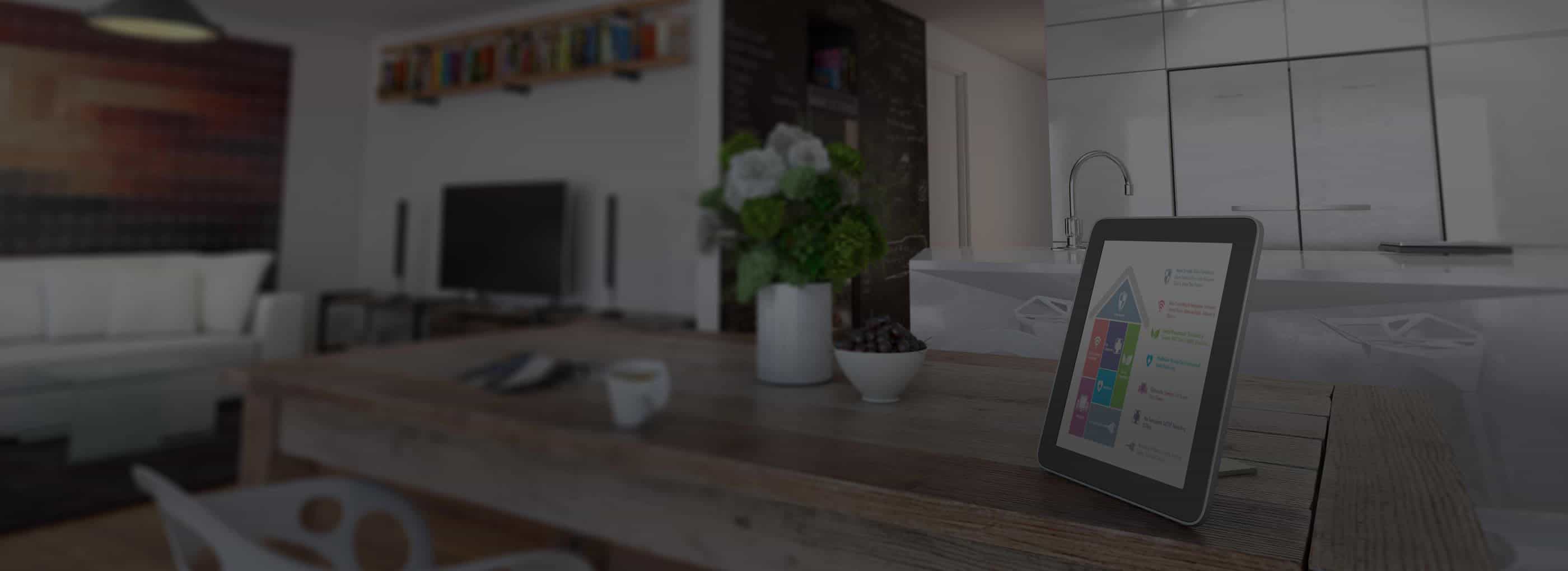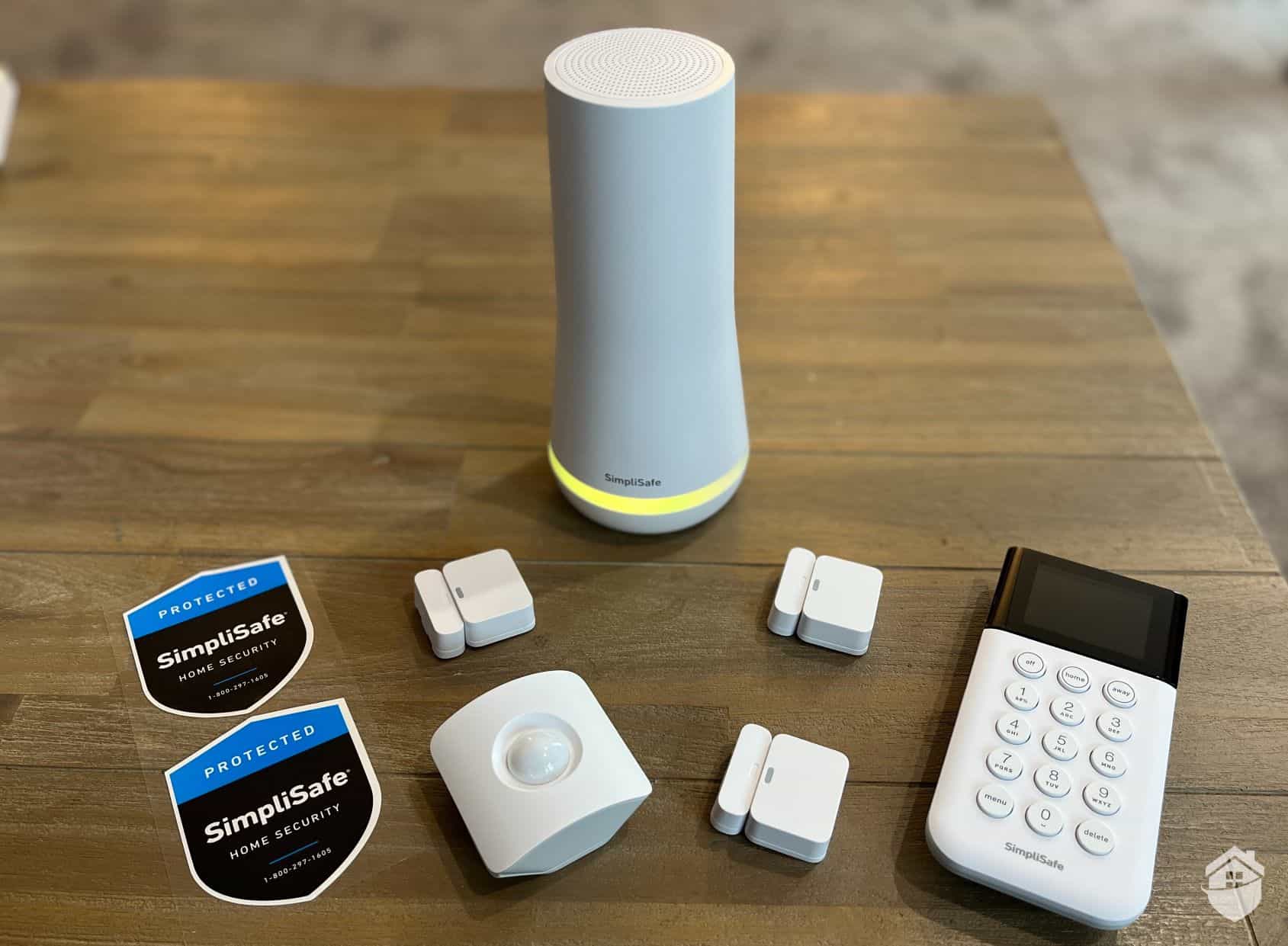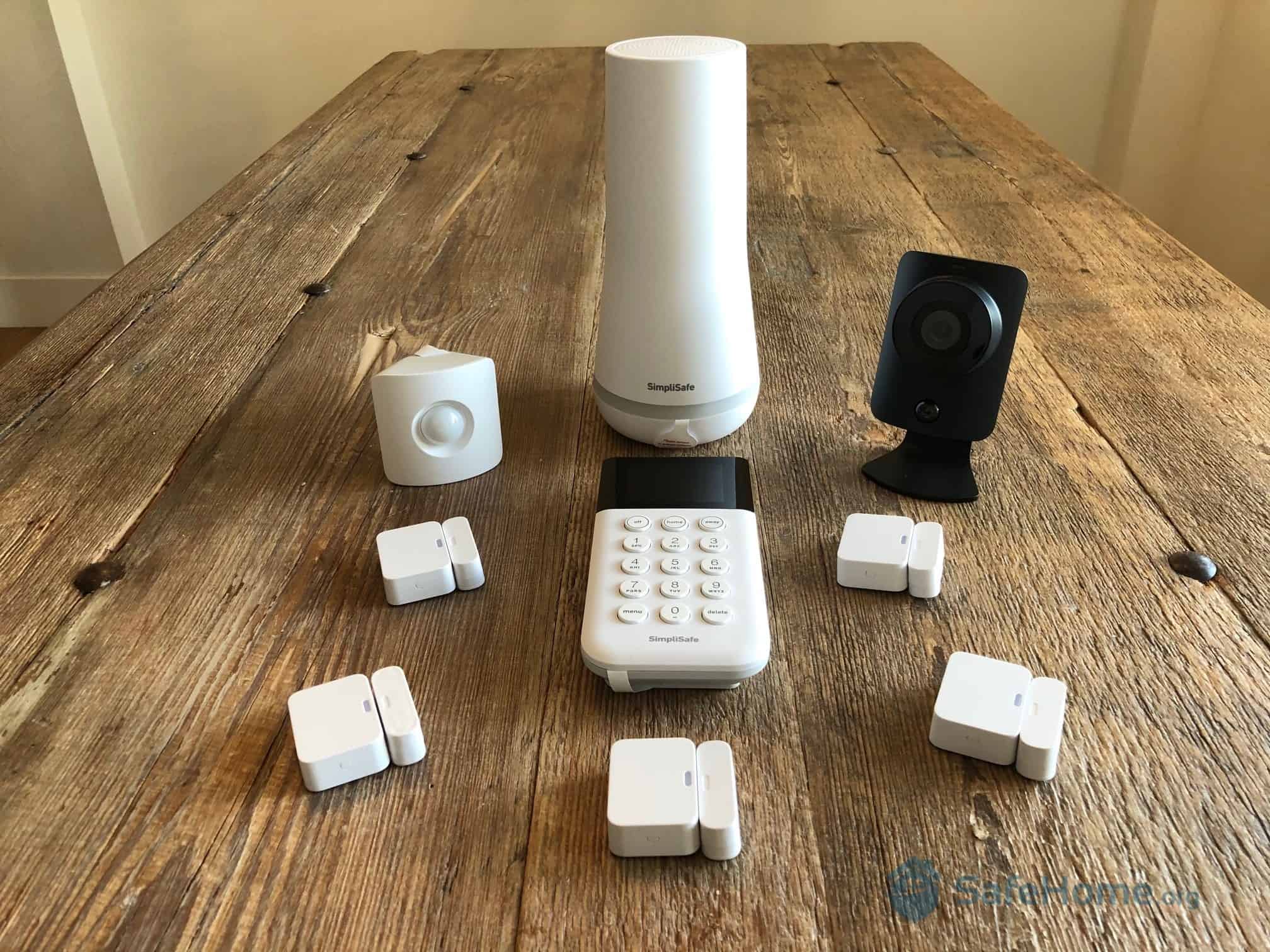In 2023, there were nearly a million reported burglaries in the U.S.1 And just because you don’t own the property, doesn’t mean your belongings and safety aren’t at risk. As a renter, you can’t typically install a permanent security system, though.
Understanding that threat and these limitations, our home security experts consulted with eight landlords to identify smart home security solutions renters can use without risking their security deposit. We’ll cover essential components, strategies to avoid permanent damage during installation, and product recommendations. Let’s dig in.
>> Related Reading: Best Home Security Systems for Apartments in 2025
Did You Know? Less than half of property crime victims report the incident.2 That means there were closer to two million burglaries in the U.S. in 2023.
Understanding Renter Limitations and Opportunities
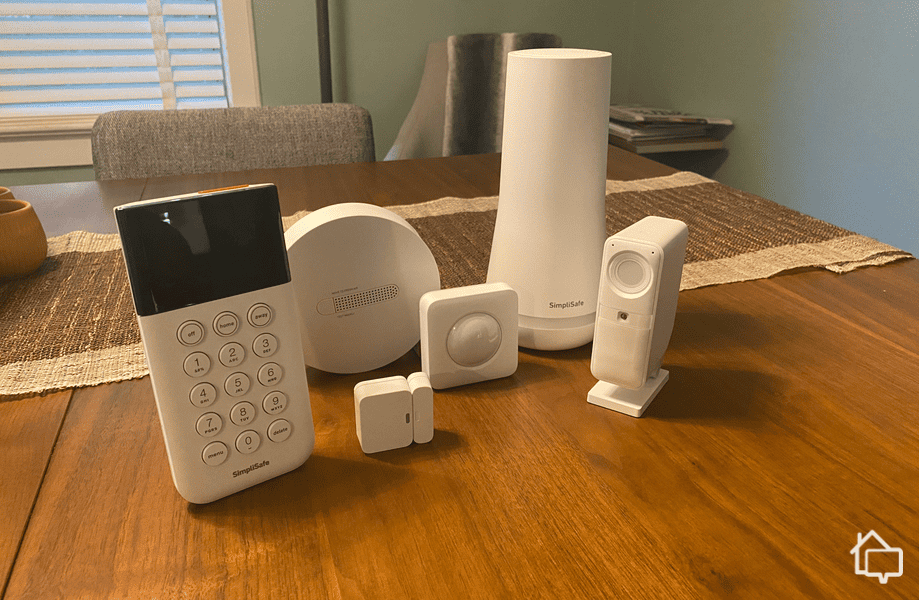
Our six-piece SimpliSafe security system is perfect for our small two-bedroom rented home.
Before breaking down the smart home security solutions we recommend for renters, let’s go over the basics.
Common Lease Restrictions
Most rental agreements contain specific clauses that limit security modifications. Standard restrictions include:
- No drilling or permanent mounting of cameras, sensors, or control panels
- Prohibited hardwired installations that require electrical or internet modifications
- Restrictions on exterior cameras that could capture neighboring properties
- Limitations on door and window modifications including smart locks or reinforced hardware
Our Recommendation: Portable DIY Smart Security Systems
For renters, we always recommend portable systems. These are systems you can set up and take down without leaving a mark. They are usually DIY, and while they are commonly seen as lesser versions of more permanently installed smart security systems, we’ve seen some that can offer advanced features.
Here are some other benefits of portable DIY security systems:
- Easy to take with you when moving to new rentals
- No installation costs or professional setup fees
- Easy expansion as needs change or budgets allow
- Reversible setup that preserves security deposits
Protect Your Deposit: Always photograph your rental’s original condition before installing any temporary security equipment. This documentation protects your security deposit if questions arise later.
Essential Components for Temporary Security Systems
After testing over 30 security systems, we’ve identified a few essential components we always recommend, even for temporary installation.
Battery-Powered Security Cameras
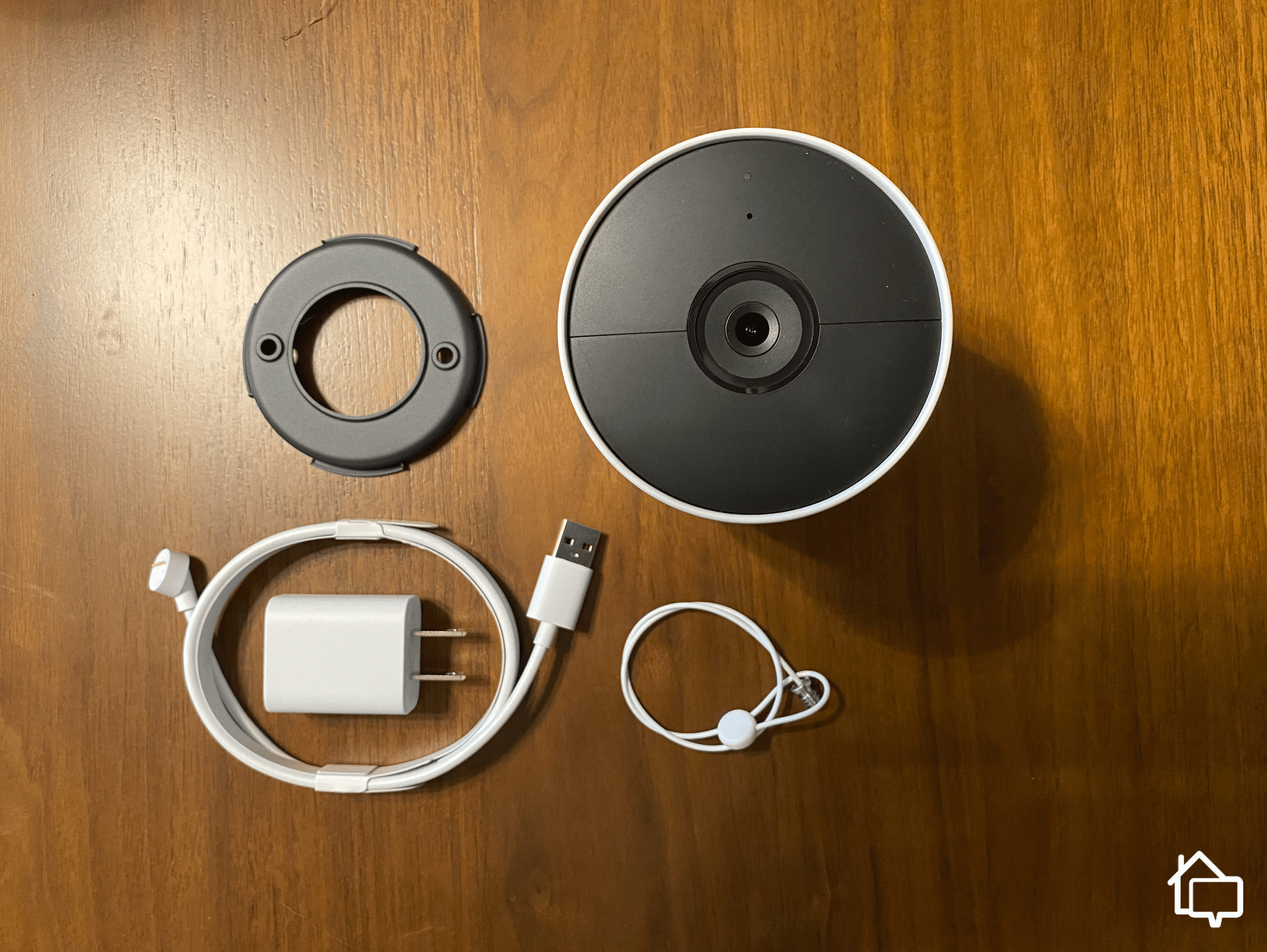
The Google Nest Cam (outdoor or indoor, battery) works as a standalone device or as part of an ADT security system.
Wireless cameras with long-lasting batteries form the foundation of effective rental security systems. These are the must-have features we recommend:
- 6+ months battery life with normal use
- 1080p or higher video resolution
- Motion detection with smartphone alerts
- Weather resistance for outdoor placement
- Cloud storage options with local backup
All of the best battery-powered cameras we’ve tested provide three to eight months of operation depending on activity levels and temperature conditions. We even tested some that let you add a solar panel for continuous charging. If a window in your apartment unit gets plenty of sunlight, a solar-charged, battery-powered security camera might be the best option for you.
>> Product Recommendations: Best Security Cameras for Apartments in 2025
Portable Door and Window Sensors
Entry sensors (e.g. door sensors) detect unauthorized entry. And the best part? They don’t need permanent installation. Most entry sensors have adhesive backings that you can easily attach onto door frames and doors.
For renters, we recommend entry sensors with:
- Thin adhesive strips that bond securely but remove cleanly
- Long-range wireless communication (300+ feet) to central hubs
- Instant smartphone notifications when doors or windows open unexpectedly
- Battery life of 5+ years with standard CR2032 (coin cell) batteries
Luckily, most if not all security systems offer door/window sensors, so it should be easy to include them in your security strategy.
Smart Locks for Renters
Even if your lease contract prohibits permanent door modifications, some smart locks work with existing deadbolts. We tested the Retrofit Smart Door Lock from August, for example, which fits over most types of deadbolt locks. It does require some modification, but not permanent ones. When it’s time to move, you can simply put things back the way they were.
With a retrofit smart lock, you’ll get benefits such as:
- Install over existing interior deadbolt hardware
- Maintain original key functionality
- Provide smartphone control and entry logging
- Remove completely when moving
Expert Inisght: Test smart locks thoroughly during the return period to ensure compatibility with your specific door hardware and deadbolt configuration.
Motion Detectors and Glass Break Sensors
Battery-powered motion detectors and vibration sensors add interior protection without wiring. They typically use the same type of adhesive mounting as door and window sensors, and most security systems we’ve tested also include motion sensors.
Just one quick note: if you have pets like us, we recommend choosing a system that offers pet-immune motion sensors, otherwise you’ll be overwhelmed by false alerts.
>> Related: The Best Security Systems for Pet Owners
Installation Strategies That Protect Your Deposit
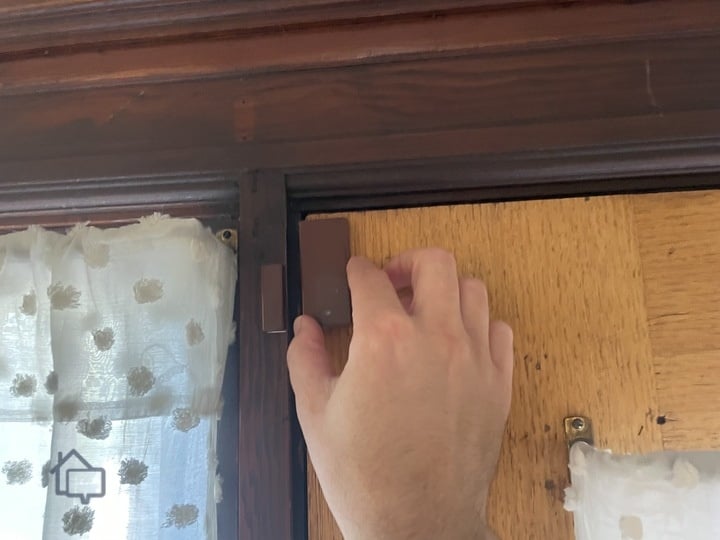
Here we are installing our ADT entry sensors to the front door of our rented home.
Our team installs and takes down dozens of security systems for testing every year. Over the years, we’ve learned installation strategies so our homes stay free of permanent scars. We’ll share these strategies with you so you can protect your deposit when you decide to install a portable, DIY home security system.
Non-Damaging Mounting Methods
Each piece of security equipment requires a different mounting method. It’s important that the mounting is secure, while also making sure it won’t leave a mark once taken down. Here are a some mounting methods we recommend:
- Command Strips and 3M Adhesives: For lighter devices like entry sensors and motion sensors, we find that command strips are the most practical. They are easy to install, they can support devices up to 16 pounds, and they make it easy to clean the wall once removed.
- Magnetic Mounts: If your apartment has a metal door frame or appliances, magnetic mounts might be an option. They’re easy to install and reposition, but we advise against using them for expensive outdoor equipment like security cameras. Magnetic mounts are easy to knock down.
- Tension Mounts: Heavier equipment like floodlights and security cameras work well with tension mounts. They have rubber ends that grip against floors, ceilings, or between walls to hold up equipment with friction.
Optimizing Camera Placement
Installing security cameras at a rental property can come with some privacy concerns and lease restrictions. Always check with your landlord before installing cameras. In our experience, landlords allow security cameras if you:
- For indoor cameras: Keep them out of private areas, like bathrooms. We recommend focusing them on main entry points and common points of egress like a hallway or living room/kitchen space.
- For outdoor cameras: Avoid pointing them in a way that they can capture a neighbor’s private property. We suggest focusing your placement on views of your own doors and windows only (pointed toward your house/unit).
Installation Tip: Place cameras 8 to 10 feet high when possible to prevent tampering while maintaining clear facial recognition of anyone approaching your door.
Top Product Categories and Recommendations
We always recommend a complete home security system instead of a ragtag team of individual components. But if you’re renting, you don’t always have to start with a complete security system. You have other options that you can slowly build out to eventually create a solid security strategy.
In any case, here are three starting points we recommend and their advantages (and some disadvantages).
Complete Security Systems
Entry Cost: $200+
If you decide to go with a complete security system, these are the components you’ll most likely need to start.
- Central hub with built-in cellular backup
- Multiple door/window sensors
- Motion detectors with pet immunity
- Key fobs for easy arming/disarming
- Professional monitoring (optional)
In our experience, buying a packaged security system is often more budget-friendly. The entry cost is still high, but often includes savings. For example, with a DIY SimpliSafe system, you’ll pay about $175 (after discounts available at the time of writing) for a system with three door/window sensors, two motion sensors, and one key fob.
>> Learn More: How Much Does SimpliSafe Cost?
Of course, you might need more than just those security components. Adding security cameras will add an extra hundred dollars or two to your final bill, while smart components like smart lights will add a hundred more. It can get expensive quickly.
Standalone Smart Cameras
Entry Cost: $60 to $250 (multiple cameras)
If you want to take an essentials-first approach, starting with security cameras is a good strategy. Security cameras perform multiple security jobs. They detect movement and loud noises, record event clips, and provide live access wherever you are.
The number and type security cameras you’ll need depends on the type of home you’re living in. If you’re renting in an apartment building, one or two indoor cameras will suffice. If you’re renting a house, you’ll likely need outdoor cameras, too, to monitor your entry points.
Most of our favorite security camera companies also offer home security systems, so you can always scale into a complete system down the line.
Smart Doorbells for Apartments
Entry Cost: $90 to $200
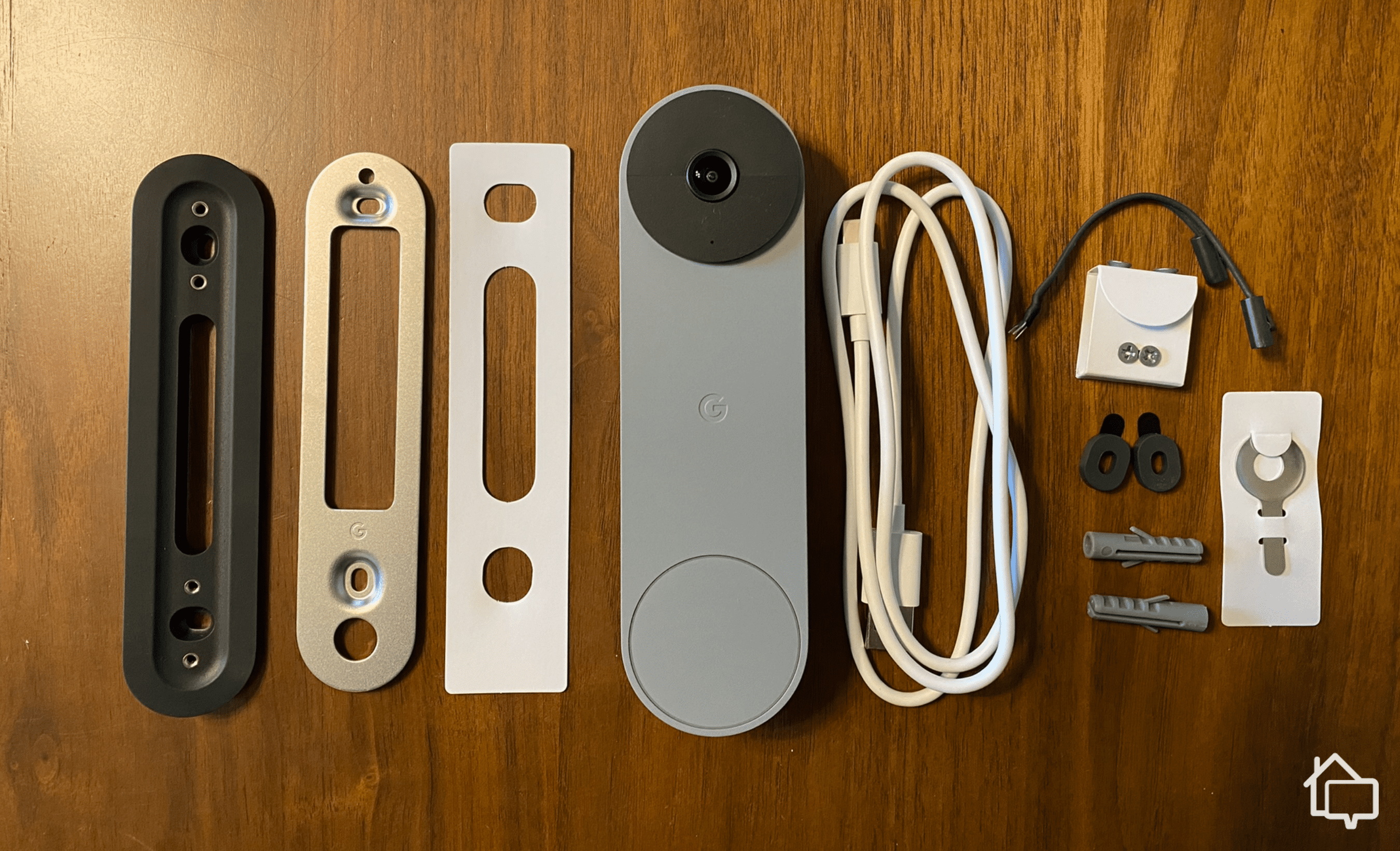
Our Google Nest smart doorbell came with everything we needed for a damage-free installation.
Your front door is the most obvious entry point to your living space, so if you want a simple security solution, a doorbell camera (a.k.a. video doorbell) is another great place to start.
Always opt for a battery-powered doorbell as they’re very easy to install and almost every landlord will allow it. We recommend looking for a video doorbell with the following features:
- Over six month battery life
- HD video with wide-angle view
- Motion detection zones to reduce false alerts
- Two-way communication with visitors
- Cloud storage for recorded events
Many models include wedge kits to angle the camera correctly when mounted on apartment door frames or beside entryways.
Professional Monitoring vs. Self-Monitoring
After picking out your equipment, the next big decision is whether to pay for professional monitoring or self-monitor.
Self-Monitoring Advantages
While we always recommend professional monitoring, even for renters, there are a few undeniable advantages to self-monitoring, such as:
- No monthly fees beyond equipment costs
- Complete control over alert responses
- Customizable alerts based on your schedule and preferences
- More portable as you don’t need to notify your alarm company of a move
Our favorite self-monitored security systems work well for tech-savvy renters who want direct control over their security system and prefer handling alerts personally.
Professional Monitoring Benefits
24/7 protection is why we always recommend professional monitoring. Just like us, you’re not going to be available at all times of the day and night to respond to alerts. With professional monitoring, your family and property will always be protected. Most providers charge between $20 and $50, so it won’t break the bank, either.
>> Read More: Best Monitored Home Security Systems in 2025
Pro Tip: When we tested SimpliSafe, we didn’t need to sign a contract for our monitoring. That meant we could freely switch between their professional monitoring and self-monitoring plans which we think is ideal for renters.
Integration with Existing Smart Home Devices
We know you’re looking for smart home security and that requires smart home integrations.
>> Check Out: Best Smart Home Automation Security Systems in 2025
Compatible Platforms
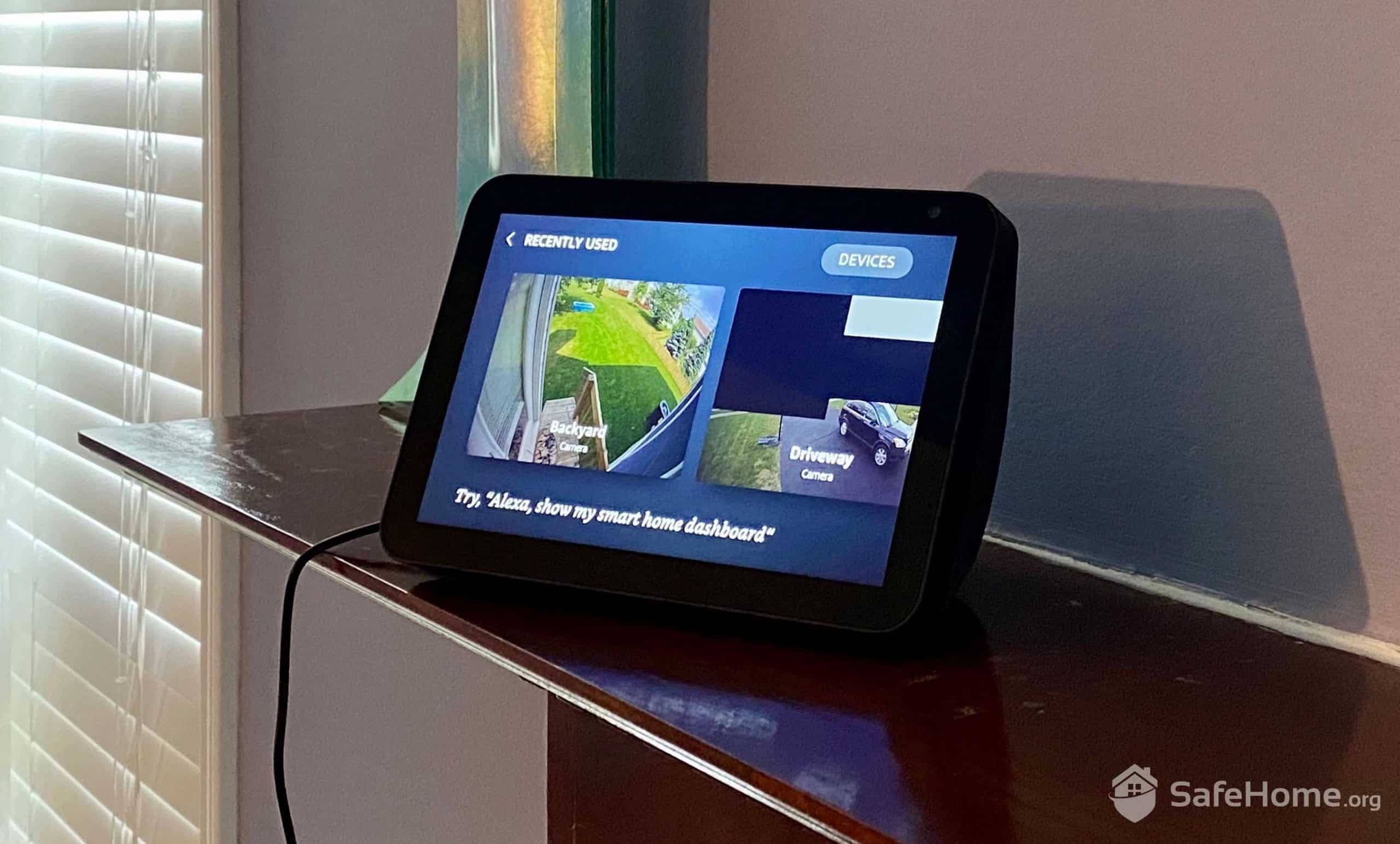
Ring’s Alexa integration allowed us to monitor the livestream of all our cameras on our Amazon Echo Show.
Most renter-friendly security systems integrate with popular smart home ecosystems. We recommend looking for systems that integrate with your current smart home devices. Alexa and Google Assistant are widely supported in the home security industry, but Apple HomeKit is less frequently supported.
We also suggest systems that offer Z-Wave and Zigbee support as those protocols offer integrations with thousands of smart home devices. If you ever want to buy new smart home devices, Z-Wave and Zigbee support opens up your options significantly.
Smart Home Automation
Integrating your security system with other smart devices allows you to use your security devices as triggers in your home automation. A few of our favorite ways to use automation with our security system include:
- Turn on our front porch lights when our video doorbell detects a person.
- Sound a siren through all of our smart speakers during an active alert.
- Adjust our smart thermostat based on whether we’re home or away.
Moving Day: Portable System Transition
The great part of a portable security system is that you can take it with you when you inevitably move. But, what does that process look like? We’ve been through it a few times, so let us break it down:
- Request a Moving Kit: Some providers, like when we tested ADT, offer a moving kit with boxes and new adhesives for our equipment.
- Uninstall Equipment: Once you get your moving kit boxes, start uninstalling your equipment. Make sure to keep it organized. We recommend putting each component in its own box with all required hardware.
- Update Address Information: If you pay for professional monitoring, notify them of your new address and your expected move-in date. You’ll need to update your billing information, too.
- Transport Equipment: Bring all of your equipment and installation hardware to your new address.
- Plan Out Your Installation: Before you start mounting your equipment, take some time to plan out where to place your sensors and where to place your security cameras to maximize their coverage in your new home.
- Install Your Equipment: With a plan in mind, it’s time to start installing your equipment.
- Confirm Your Change of Address: Call up your security provider one last time to confirm your change of address and let them know that your system is set up at your new place.
Final Thoughts: Protecting Your Rented Home
Whether you’re protecting a studio apartment or a large rental home, modern security systems offer professional-grade protection without a permanent installation. From peel-and-stick sensors to wireless cameras and video doorbells, nowadays, any type of equipment is accessible to renters.
All it comes down to is finding a solution that works for your needs. Just remember to take your future home into consideration, too. Most providers offer scalable solutions so you can start with a system for a small apartment and scale it up when you move into your forever home.
Frequently Asked Questions
- Can I install security cameras in my apartment without landlord permission?
Interior cameras typically don’t require landlord approval, but exterior cameras may need permission depending on lease terms and local laws. Always review your lease agreement first.
- How long do battery-powered security cameras last between charges?
Most quality battery cameras provide 3-6 months of operation with normal use. Solar panel accessories can extend battery life indefinitely in sunny locations.
- Will security system adhesive strips damage paint when removed?
High-quality removable strips like 3M Command products typically remove cleanly from properly cured paint. Test in an inconspicuous area first and follow manufacturer removal instructions.
- Do I need professional monitoring for effective security?
Self-monitoring through smartphone apps provides adequate security for most renters. Professional monitoring adds 24/7 response capability but isn’t essential for basic protection.
- Can I take my security system when I move to a new rental?
Yes, portable security systems are designed for easy removal and reinstallation. Most equipment can be packed and moved like other personal belongings.
- How much does renters insurance discount for security systems?
Insurance discounts vary by company and coverage level, typically ranging from 5-20% annually. Contact your insurance provider to confirm available discounts for your specific system.

